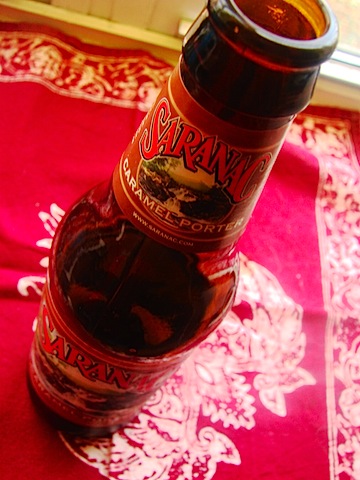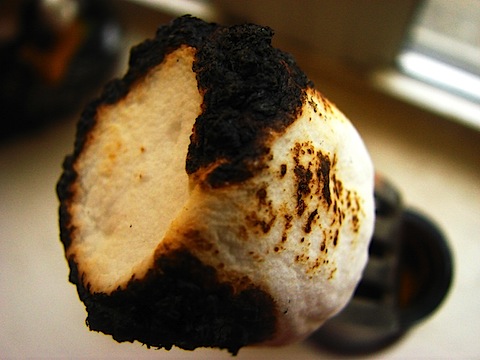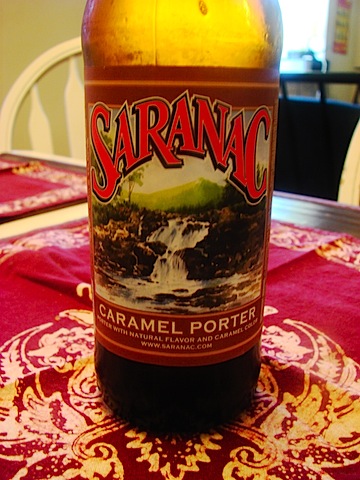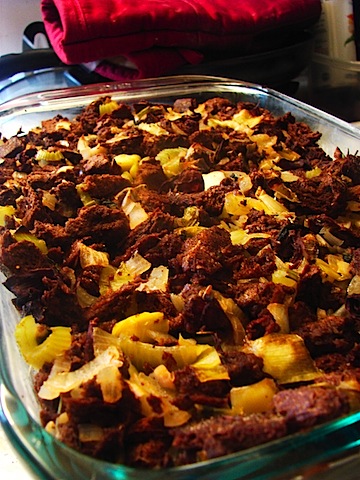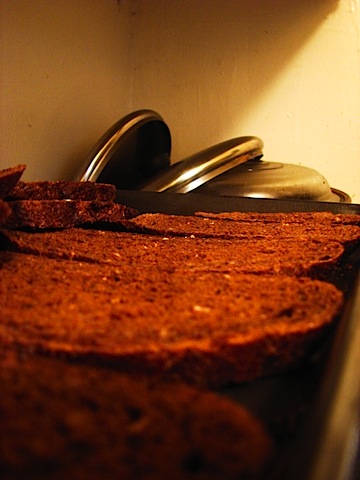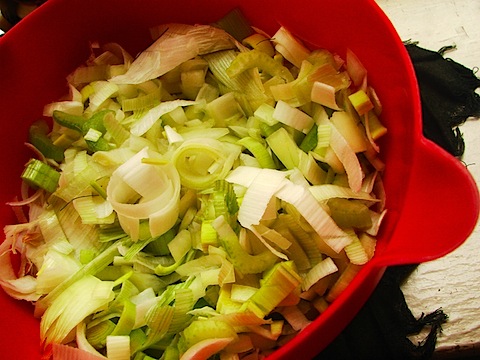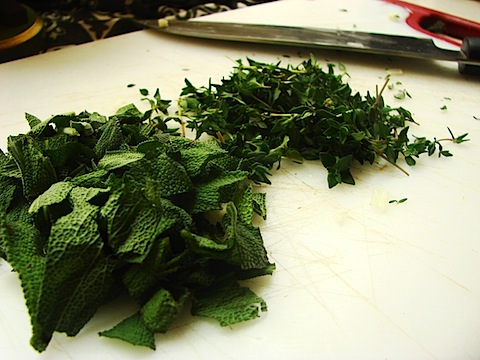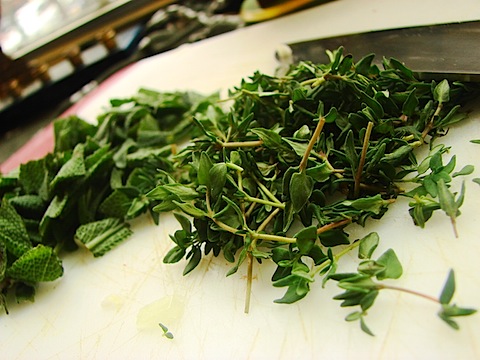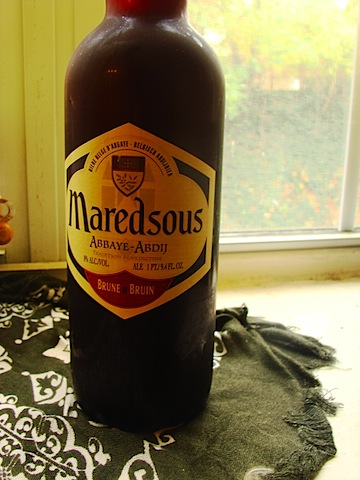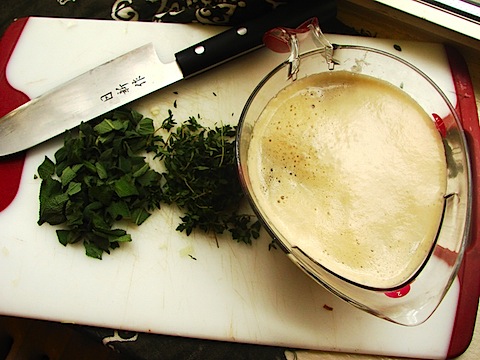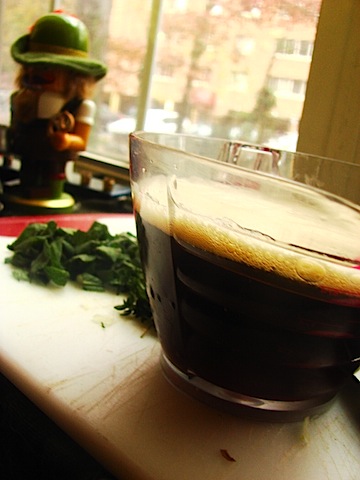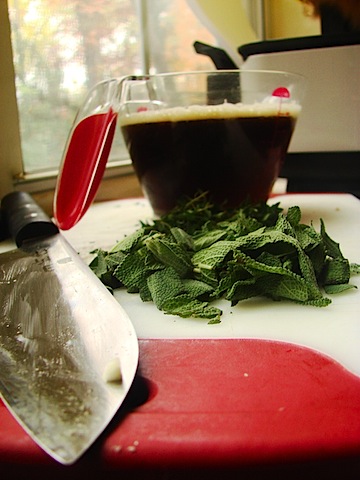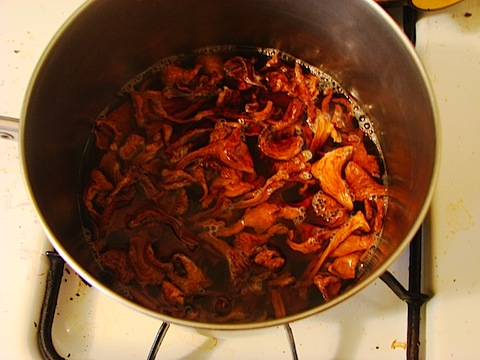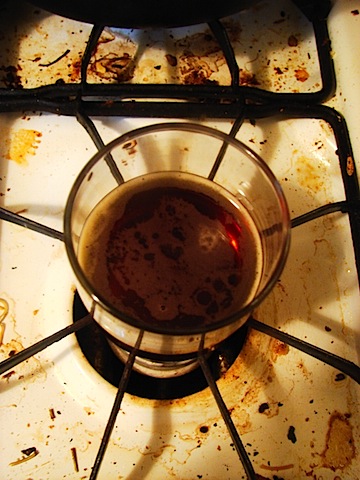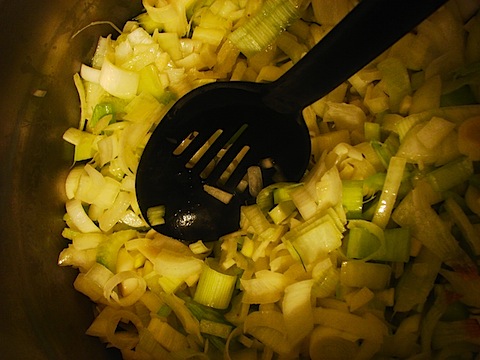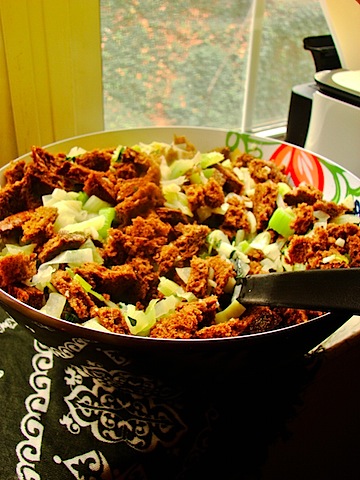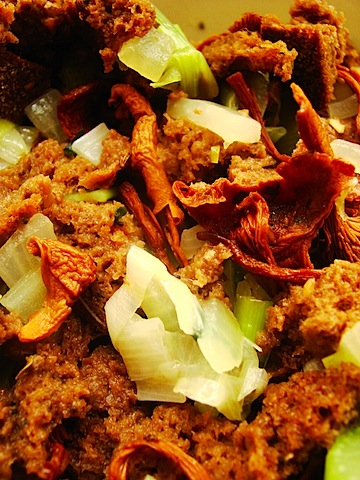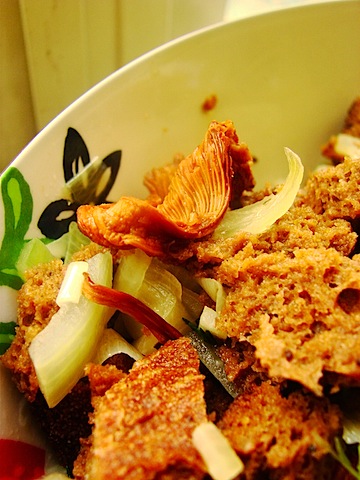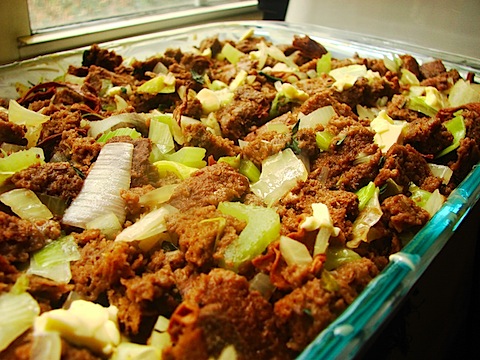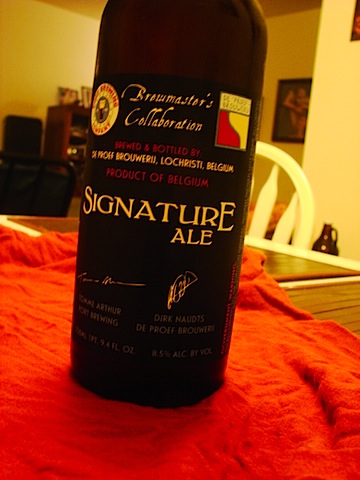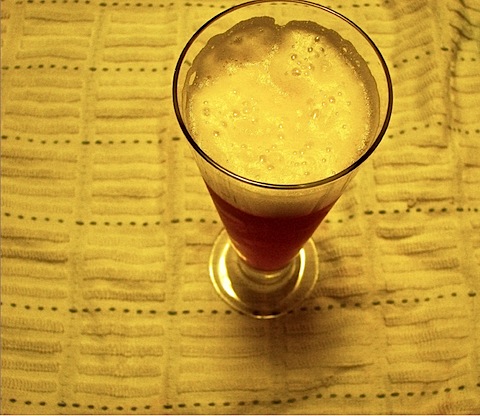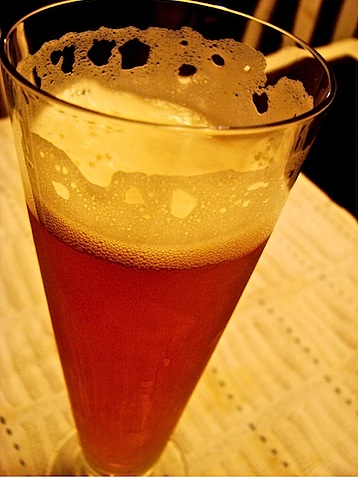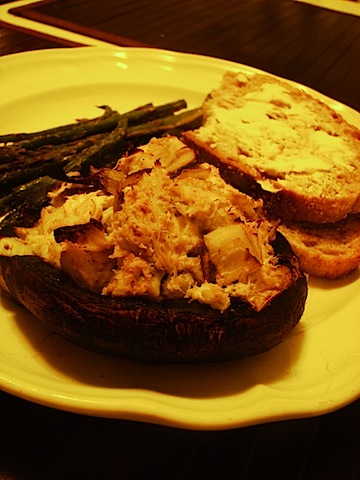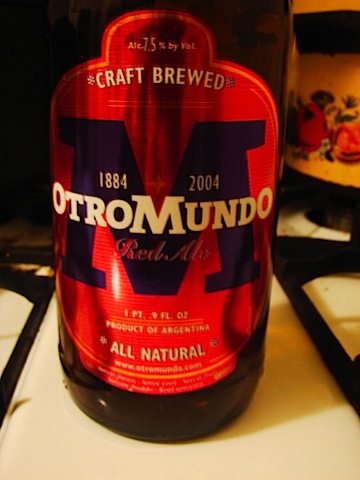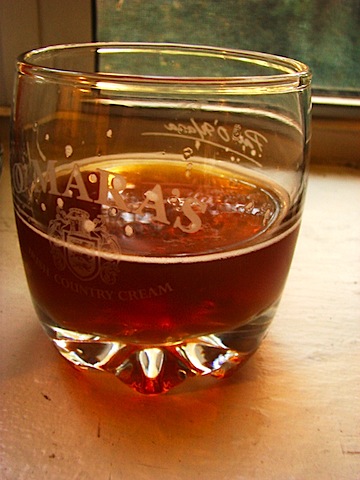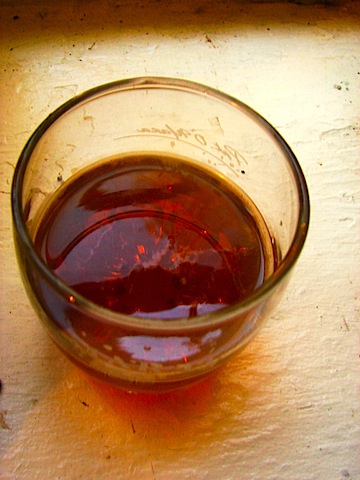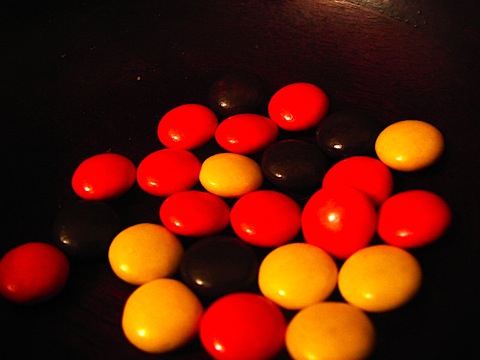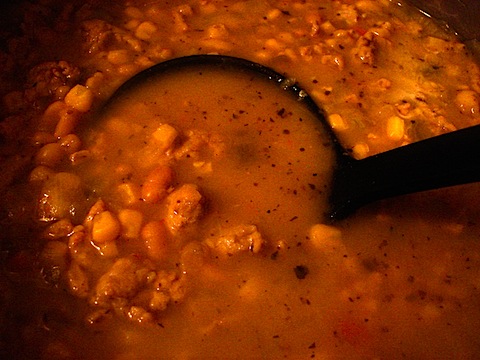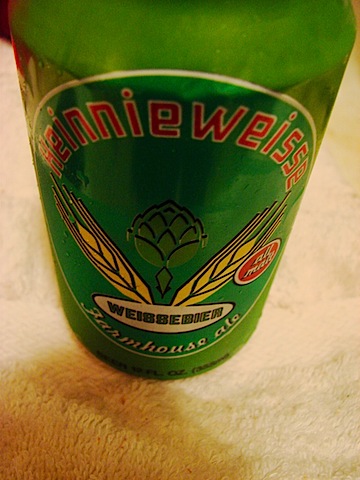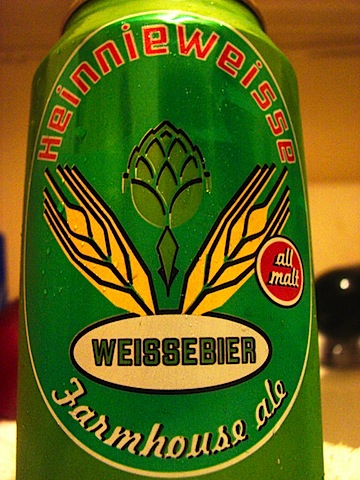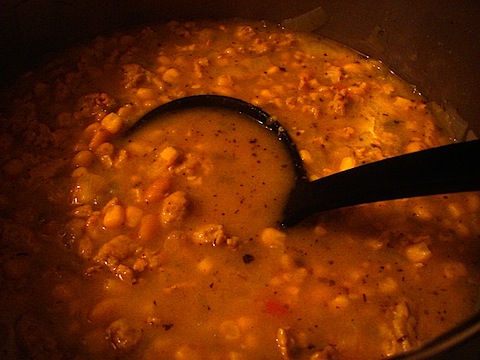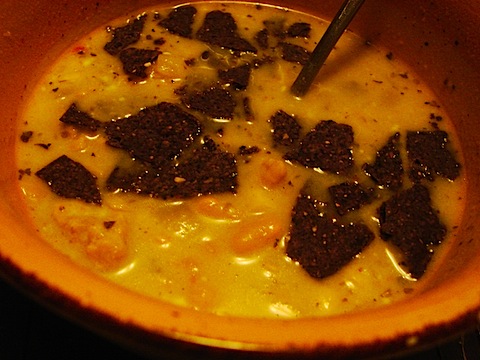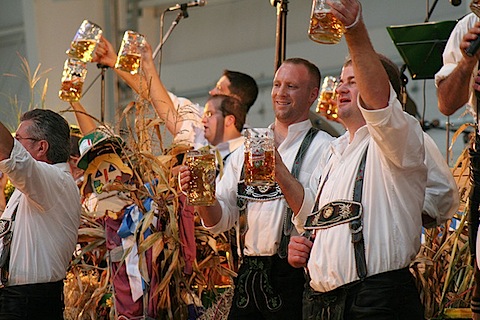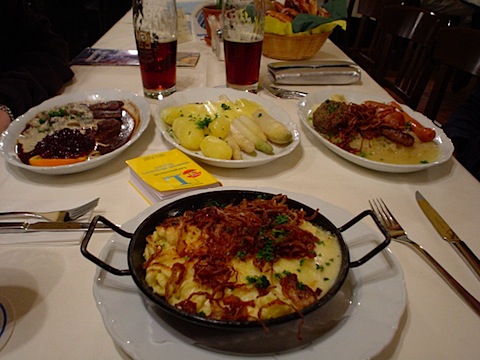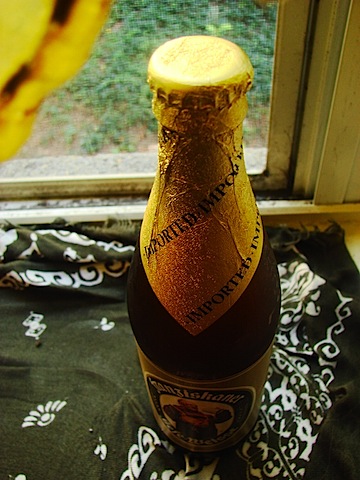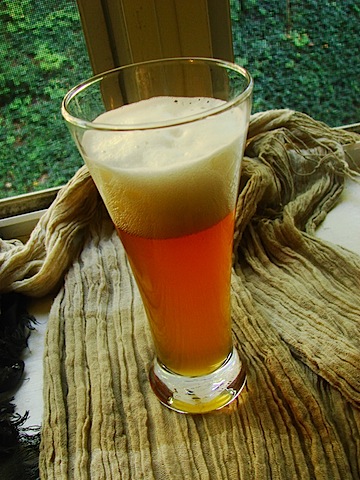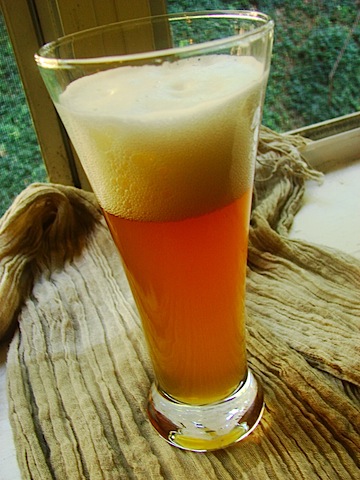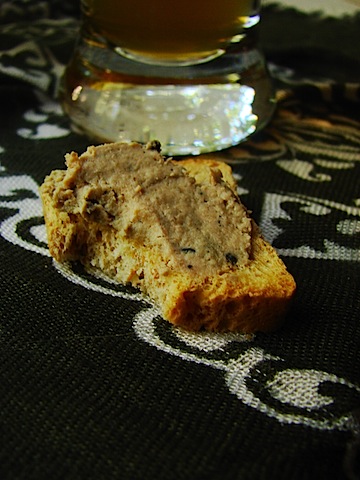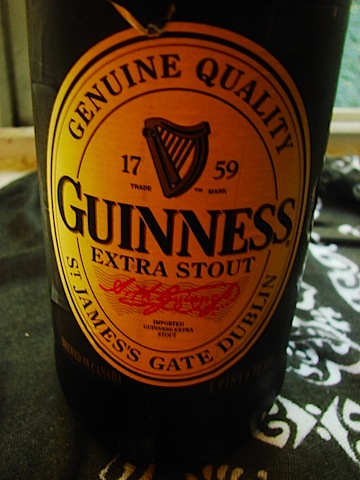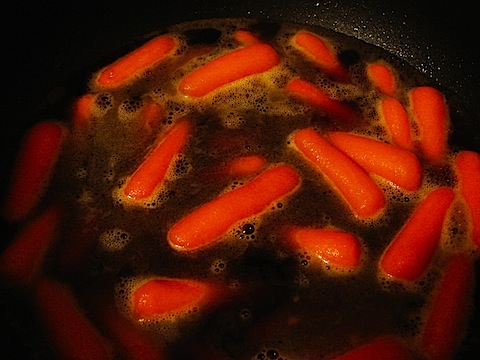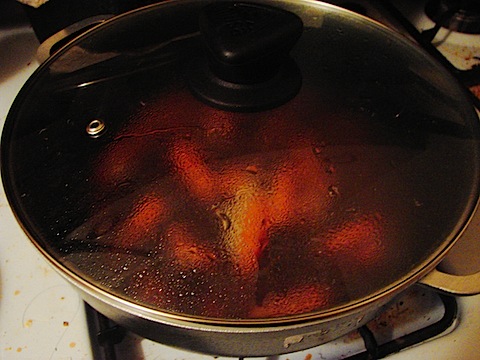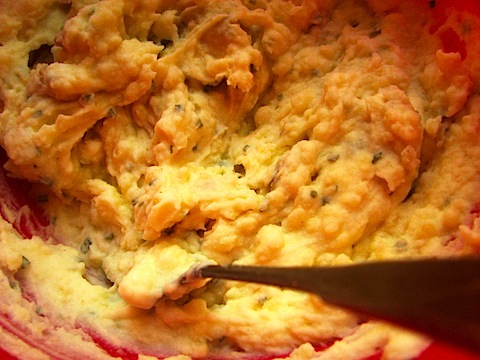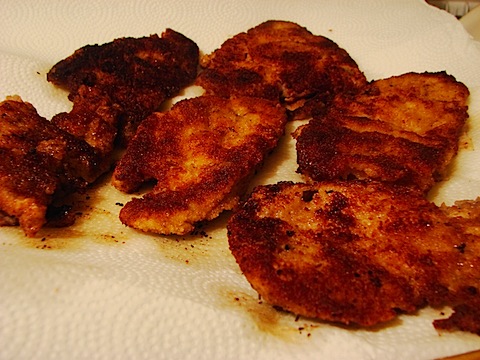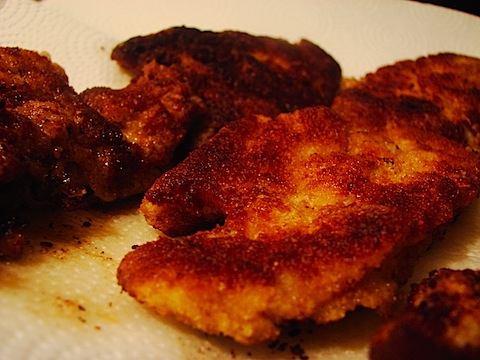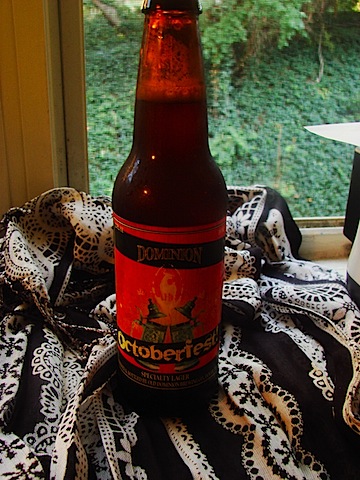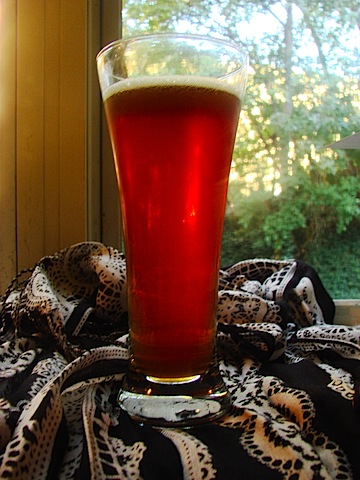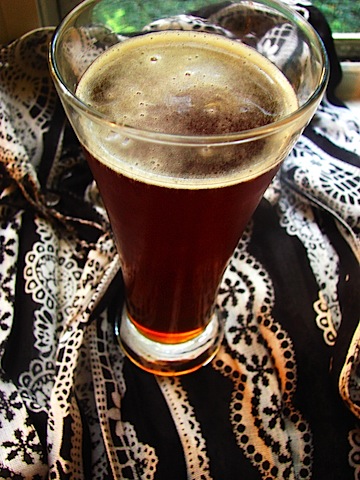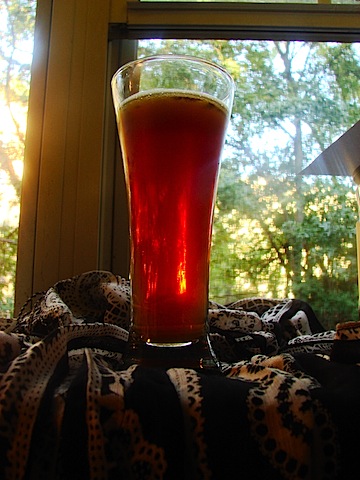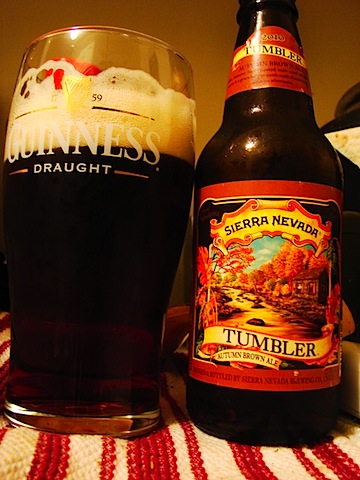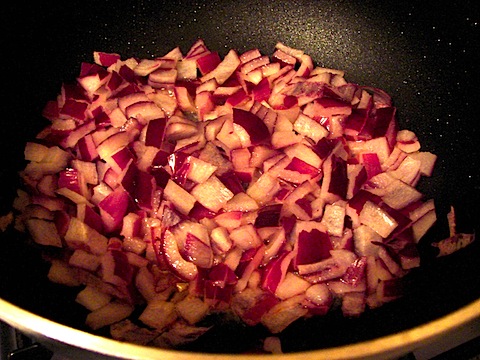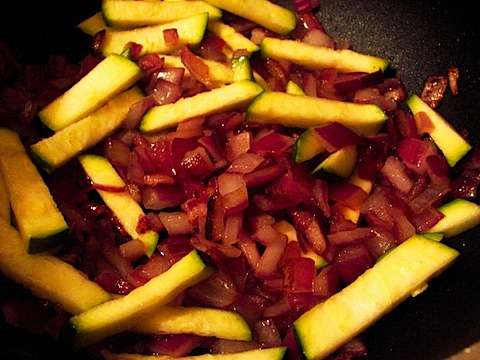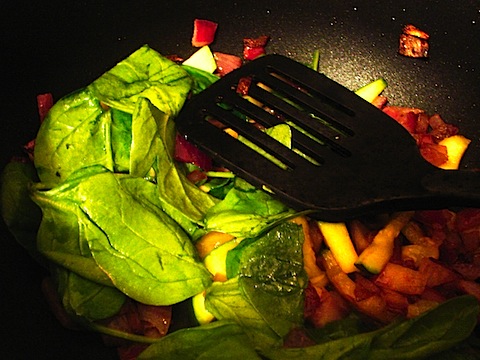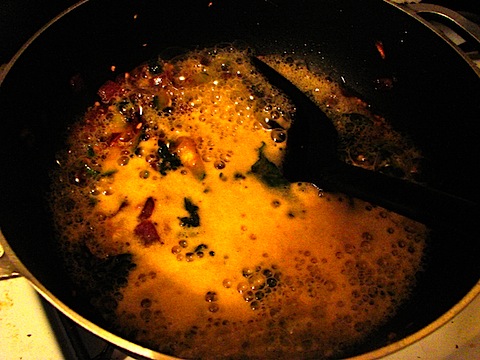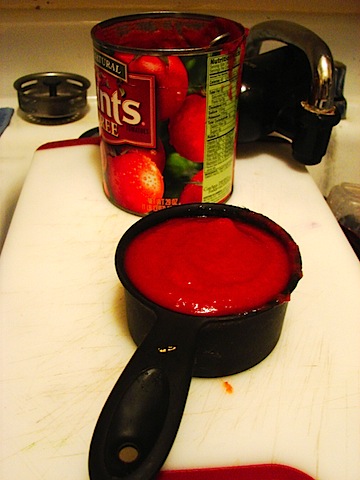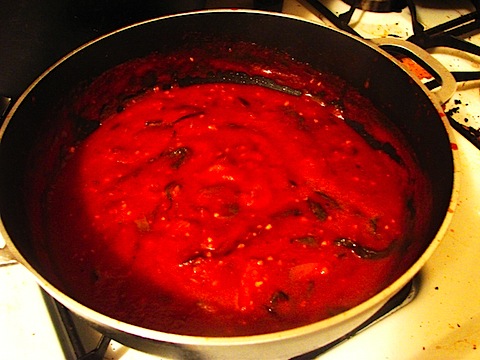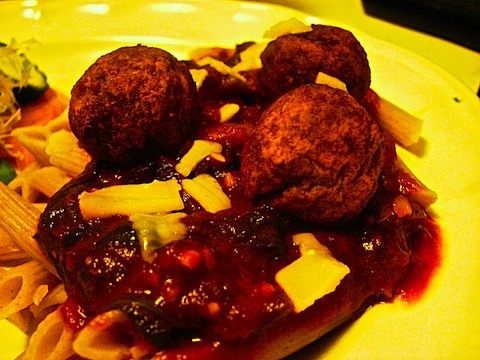Two beers. Two recipes (well, two with beers. Three recipes total!). A bonus beer at the end. People.
This was a delicious night.
If you’ve never cooked with beer, these are pretty good recipes to try. It’s all simple, more about technique than precise measurements (just my style…I could never be a baker), with lots of room for tweaking and improvisation.
Let us begin.
Recipe #1: Magic Piggy in a Hat #9
It’s a pork roast. In case that didn’t come across in the title. And it’s roasted in a bath of Magic Hat’s original brew, #9!
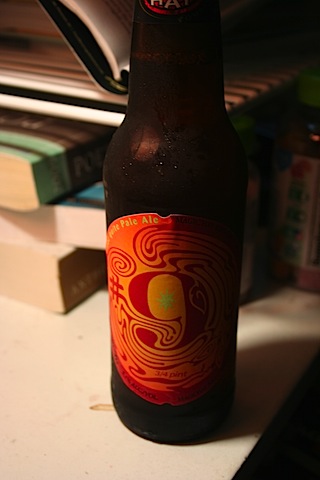
Hiding in the shadows….come into the light, my dear….
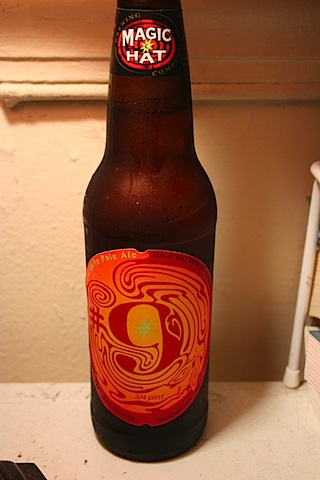
There we are. I thought the tangy, apricoty #9 would match fabulously with juicy pork. And it did.
So here’s what you do:
Make a make-shift no-clean roasting pan because you forgot to buy a disposable one by wrapping layers of tinfoil around an 8×8 baking dish (it won’t work. You’ll still have to clean up).
Pour about….~3/4 of the beer in the bottom of the pan. Add spices. I used garlic, oregano, cayenne, ground roasted coriander, (I think?) marjoram, and these guys:
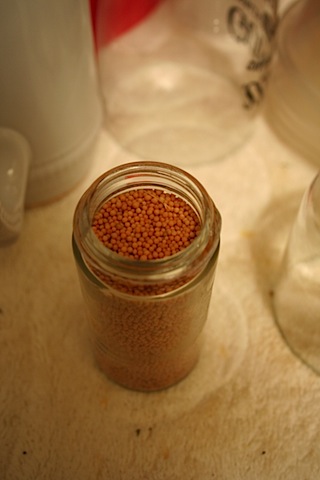
(mustard seed) because I never use mustard seed! The bottle had literally never been opened before (it came with our spice rack). So I thought I’d give ’em a whirl.

Yum. But I don’t recommend drinking it at this point. But at this point I DO recommend putting the piggy in the pan.
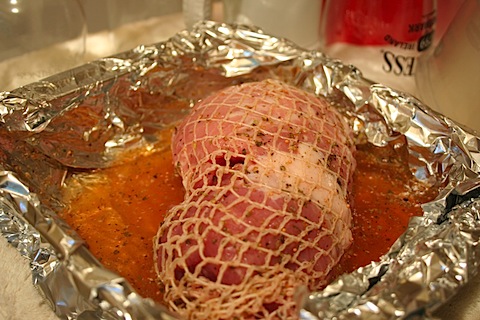
And sprinkle some more spices on top. Note: if you have cats, bury this twine DEEP in the trashcan after removing from pork post-cooking. If it’s at all smell-able, they will dig it out during the night, eat part of the meshy encasement, then throw it up all over the pants you left on the floor whilst you sleep unaware.
FYI.
Then you put it in the oven at 325 for about an hour and 20 minutes, hour and a half. Even though this pork roast said “self-basting” (I didn’t believe it; it doesn’t even have arms!), I recommend basting a few times during the cooking process.
I also recommend drinking the rest of that beer. And taking awkward photos of yourself doing so.

And while that’s cooking, you can start on recipe #2!
Recipe #2: Okra and Tomatoes Stewed in Woody Creek Water
The star of this show is this yummy witbier from local Frederick, MD (birthplace of the one and only Dan Prestwich, by the way!) brewery Flying Dog.

Not sure what Flying Dog’s availability is outside this area, but if you can’t get your hands on it, any medium-bodied witbeer will work. But if you CAN get your hands on some Flying Dog, I highly recommend it, because they’re awesome.
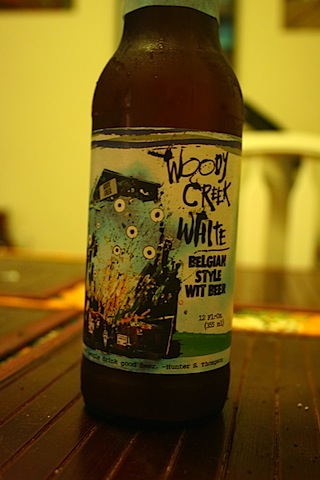
“Good people drink good beer.” -Hunter S. Thompson
Their slogan is short and to the point as well: “Good Beer. No Shit.”
That says it all. I gave Dan a hoodie with that slogan on it for Christmas!
Anyhow, here’s how you stew okra and tomatoes in beer. Actually, stewing okra was a totally new thing to me in general; I had to look up how to do it. I’ve only ever pan-cooked okra in olive oil before. But this was super easy + super delicious.
First, you chop chop chop your okra:
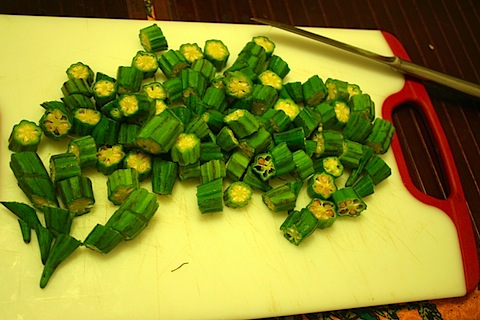
It won’t be as great as that one guy’s okra at the farmer’s market, that’s so firm and fresh that he’ll slice out samples to eat raw, but as you haven’t been to the farmer’s market and it’s not quite summer yet, Harris Teeter okra will have to do.
Then you chop chop chop your tomatoes:
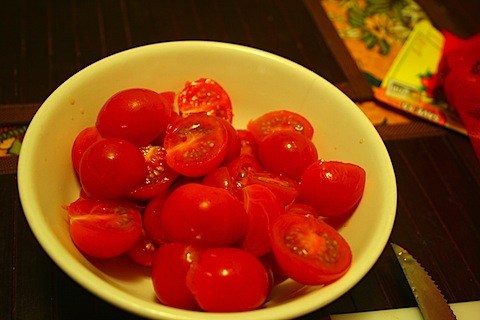
These really were “Nature Sweet.”
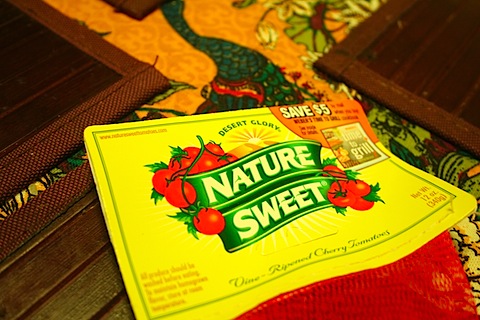
SO fresh and delicious, and just bursting with perfect ripeness.
Then you take the okra and tomatoes (no amounts…just however much looks like it could feed a small army. Of hippos. Because this girl right here can eat a pound of okra just by herself), toss them in a pot, and add….~2/3 of a bottle of beer? And some tomato juice (who knows how much…wing it!)
Bring to a boil.
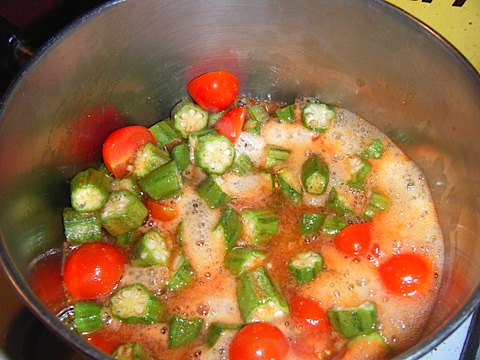
Reduce heat and simmer uncovered until liquid is aaaalllll but reduced (~30 minutes), stirring a few times (more towards the end, to prevent sticking). I think I threw some garlic in too? I don’t remember. Feel to run with it, babies!
And feel free to drink the rest of that beer too. But don’t bother with trying to take more photos of yourself. None of them will even be remotely postable on your blog.
But DO bother to make this next dish while the oinky’s roasting and the ‘maters and okra are simmering. DO DO DO BOTHER! It’s awesome.
Recipe #3: Beer-less (But Delicious) Spicy-Sweet Mashed Sweet Potatoes
Is this little bugger a sprout, or just some sort of potato hair??
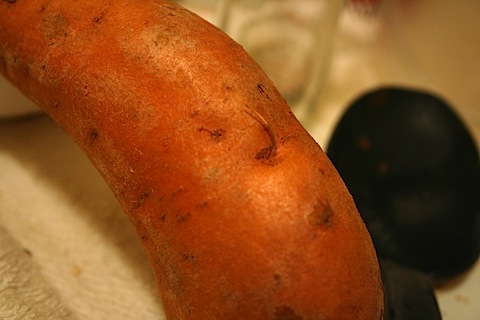
Welp, I don’t know, but I just cut it off and went on my merry way. And no one died!!
Microwave it for 10 minutes until the skin basically falls off. Put it in a bowl. Add a few spoonfuls of cream cheese, a little apple juice to moisten things up (won’t need much…sweet potatoes are so much more naturally soft and fluffy than regular potatoes!), some cinnamon, a tiiiiny bit of cayenne, and this:

This stuff is my new favorite condiment. Sorry non-Virginian readers (if there are any of you out there), you’ll probably never get to taste this. Unless you make a very long journey to Fort Valley, VA (or Mount Jackson, where we bought it from, about 12 miles south of Fort Valley). That’s watcha get for not living in this awesome state! It’s so perfectly sweet and smokey and just the right amount of spicy. I applied liberal amounts to the sweet potato mash, and it totally MADE this dish!
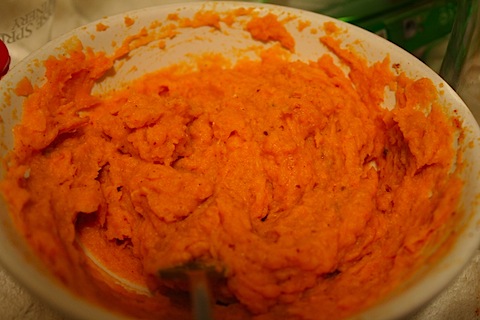
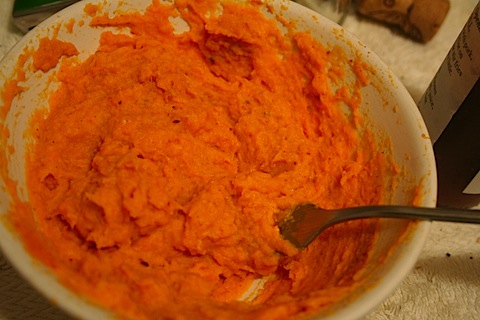
You’ll want to make this with more than one potato though. I think we both would have preferred ~10 pounds of this, funneled directly into our mouths.
Now then, somewhere around this time you’ll have a steaming pot full of this:

And a gorgeous, juicy roast that looks like this:
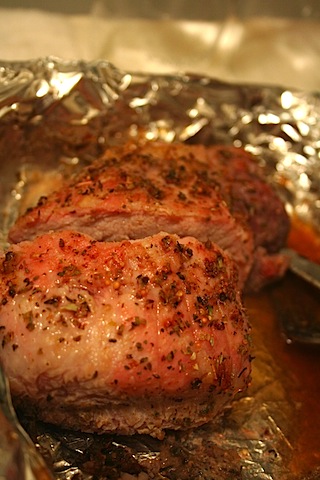
Holy. Oinks.
Honestly, I was too busy digging in to take a nice pretty final presentation photo of my plate, so no climactic beautiful dinner plate pic. But it was deeelicious.
And the icing on the cake?
This guy to pair with my plate:
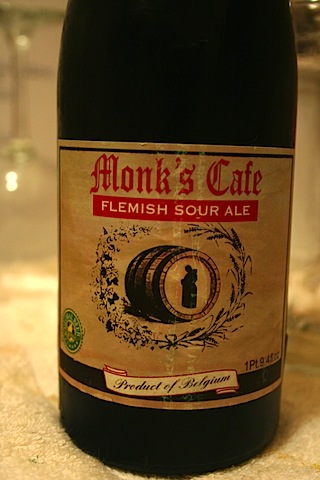
I had the signature house brew of Monk’s Cafe for the first time a few years ago when Dan and I took our first vacation together, to Philadelphia, around Christmastime. It was my first introduction to sour ales, and I was completely, utterly in love. With the beer and with my man 😉 But I had never again been able to find it here in VA after that first taste.
And then, just like an old flame reappearing when you least expect it in the same aisle as you in the grocery store, it appeared on a little shelf in the Harris Teeter. And we were reunited.
Then:

And now:
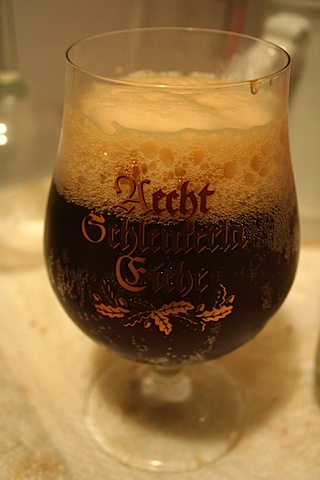
So perfectly lactic and sour, with a sweet finish. My unicorn beer. Along with Innis & Gunn (which I had in Canada in 2006, but which is only available on this side of the pond in Canada & New England, it seems)
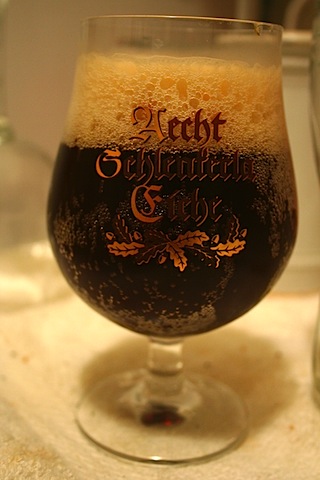
A perfect finish.
Go make all these recipes now. They will knock your socks off. Then, if you have access to the Hyde Park H-T, go buy some Monk’s Cafe sour Flemish ale. And have yourself a ball.
Cheers!
